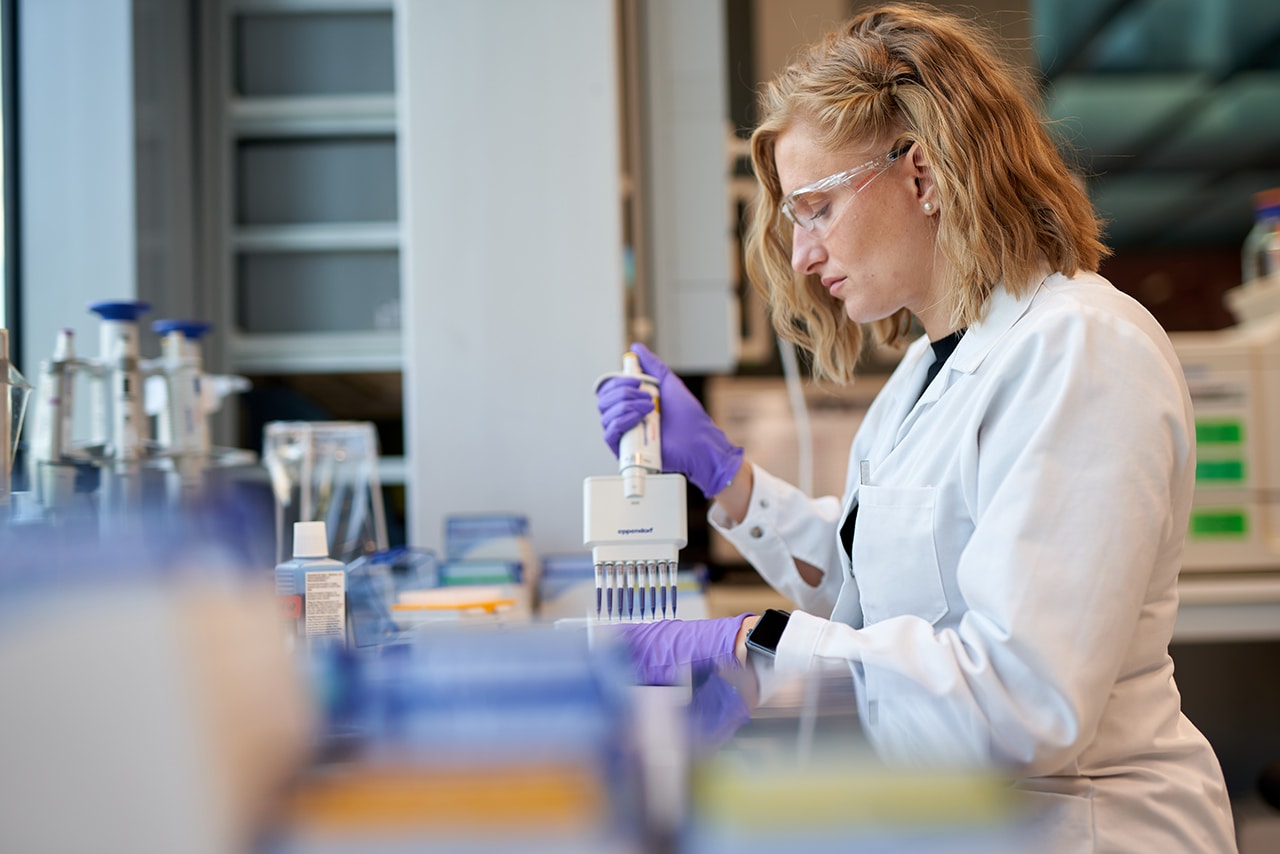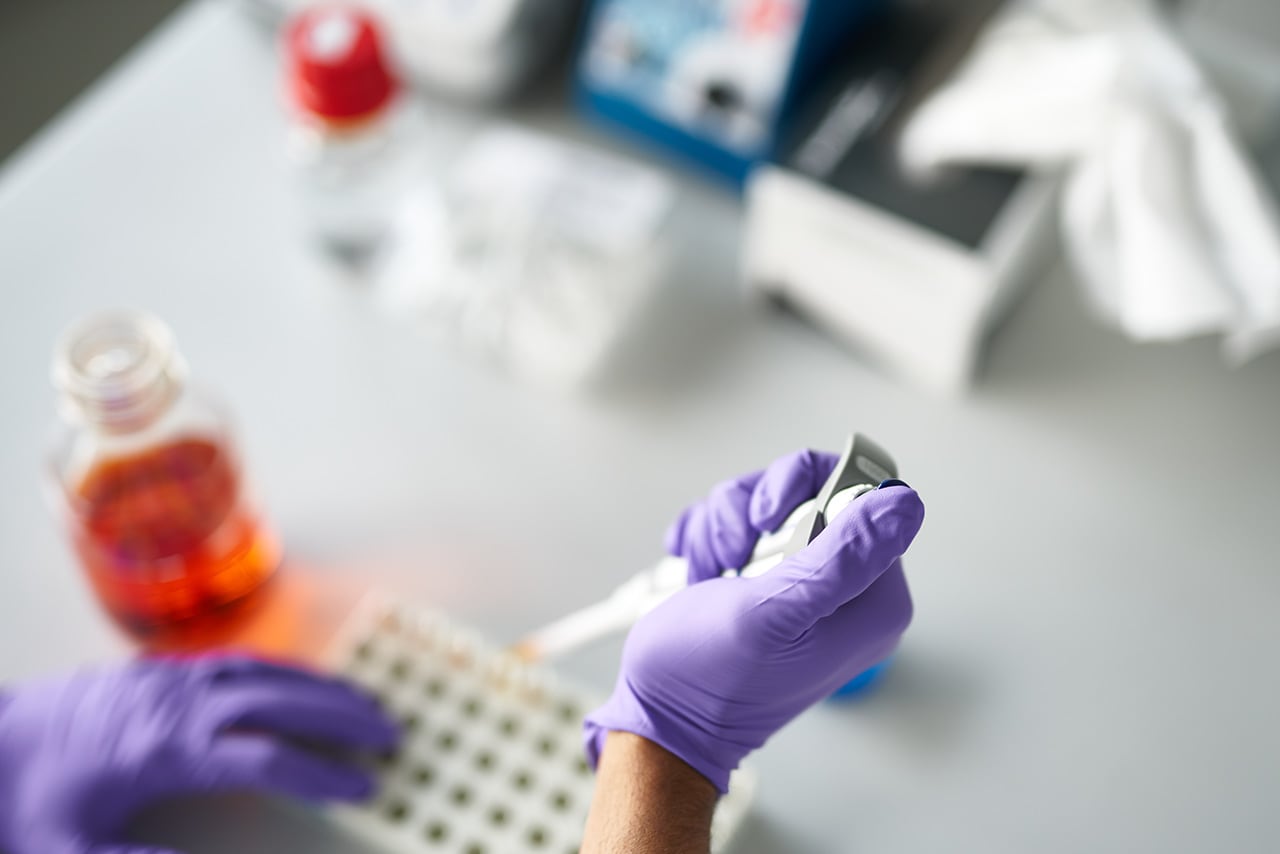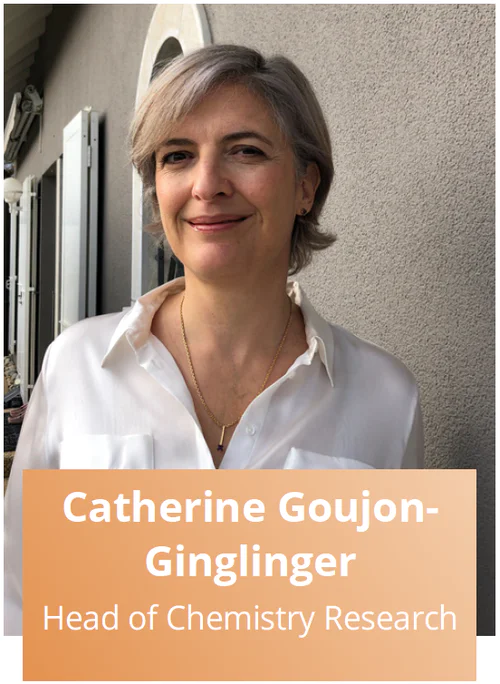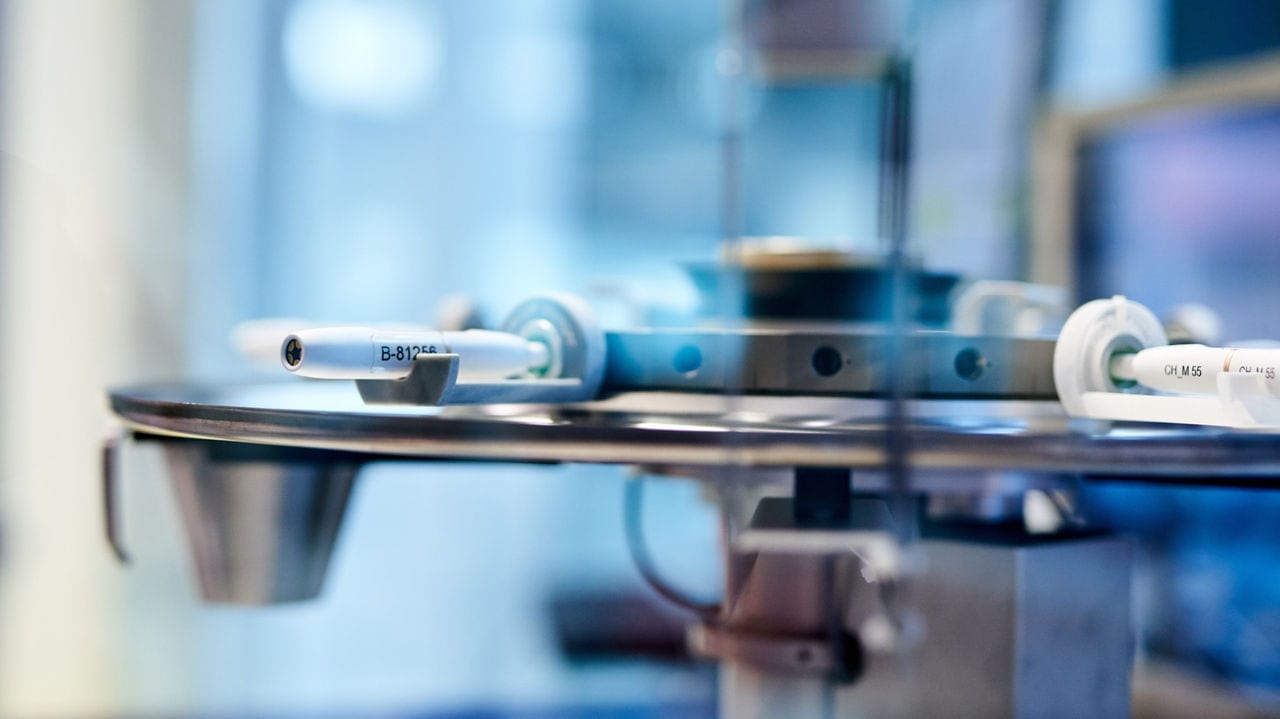Our scientific approach
We have more than 980 scientists, engineers, technicians, and support staff at PMI, each working in different, complex areas and all playing a role in helping us to deliver a smoke-free future.
Our goal is to develop and scientifically substantiate smoke-free products that are less harmful than continued smoking, with the aim of completely replacing cigarettes as soon as possible. For these smoke-free alternatives, we’ve implemented a rigorous scientific assessment program.
The best way to avoid the harm of smoking is to not start in the first place. For someone who already smokes, quitting tobacco and nicotine altogether is the best thing they can do to reduce their risk. And if an adult smoker won’t quit, then switching to a product that doesn’t burn tobacco is a better choice than continuing to smoke cigarettes.
This is because most of the harmful chemicals found in cigarette smoke and linked to smoking-related diseases are generated by the burning process.
Our scientific assessment program covers a wide spectrum of activities from initial product development to the monitoring of these products once they are on the market.
Our practices are inspired by the pharmaceutical industry and aligned to the 2012 draft guidance for modified risk tobacco product (MRTP) applications issued by the U.S. Food and Drug Administration's (FDA's) Center for Tobacco Products. We conduct our research in accordance with Good Laboratory Practice (GLP), Good Clinical Practice (GCP), and other international standards and practices.
Here is a closer look at the five steps in our assessment program: Platform Development, Toxicological Assessment, Clinical Assessment, Perception and Behavior, and Long-term Assessment, and the work conducted by some of our scientists and R&D experts.
Platform development
Assessing the risk reduction potential of a smoke-free product relies on the quality of the initial product design, and on strict manufacturing controls to ensure it delivers a consistent aerosol. Our heated tobacco products (HTPs), for example, are designed with the aim of eliminating or reducing the levels of harmful and potentially harmful constituents (HPHCs) found in their aerosol, compared to those found in cigarette smoke.
“Building and leveraging our knowledge in chemistry research can support innovation, product development, scientific claim substantiation, and regulatory submissions, and plays a key role in facilitating consumer acceptance.
Another key area of focus is to enhance capabilities related to liquid chromatography (LC), and gas chromatography (GC)xGC high-resolution mass spectrometry (MS), which serves to characterize the chemical space of smoke-free alternatives and detect any new constituents in aerosols. In this context, customized chemical databases are designed to support data interpretation and facilitate toxicological assessment. Learnings acquired in recent years have proved critical in developing new methodologies and processes to accelerate the assessment of smoke-free products.”
Toxicological assessment
Toxicological assessment aims to confirm whether the reduced formation of HPHCs, for example, leads to reduced toxicity and reduced risk of smoking-related diseases in laboratory models. We also take an innovative systems toxicology-based approach to risk assessment.
“In Preclinical Science and Toxicology, our scientists from various areas of biology, pharmacology, toxicology, aerosol science, biostatistics, and computational modeling, dedicate their time to preclinical scientific assessment of all PMI’s smoke-free products. Our laboratories are ISO 17025, GLP, and GCP accredited to ensure all data generated is of the highest quality standard and withstands external scrutiny by regulatory authorities and the global scientific community.”
Clinical assessment
Clinical studies help show the extent to which adult smokers would find the product an acceptable alternative to cigarettes. They investigate whether a reduction in the formation of HPHCs measured in the laboratory leads to a reduction in HPHC exposure under real-world conditions, and if switching from cigarettes to a smoke-free product has a beneficial effect on a smoker’s health profile.
“In my current position, my role involves contract/agreement execution with external suppliers, collaboration with internal and external stakeholders on budget and contracts, vendor management, and budget management for all the clinical studies and projects within Clinical Research. Previously, I was Manager of Translational Research, and worked on bridging nonclinical and clinical data in clinical studies in terms of biomarkers of potential harm.”
Perception and behavior
We conduct perception and behavior studies to better understand a smoke-free product’s potential to benefit public health. These studies include research into how smokers perceive a product’s risk and how they adopt and use the smoke-free alternative under real-life conditions.
“At PMI, I lead the development and execution of PMI’s Perception and Behavior Assessment (PBA) consumer research program on smoke-free products. The PBA program consists of premarket studies aiming at gathering scientifically robust evidence to measure a) the effect of smoke-free products on tobacco use in adult tobacco- or nicotine-containing product users, b) the effect of smoke-free products on tobacco initiation in adult non-tobacco or nicotine-containing product users, c) consumer understanding and perceptions.
The PBA program also consists of postmarket studies aiming at gathering scientifically robust evidence to measure the effect of the commercialization of smoke-free products on the population as a whole by measuring the effect of smoke-free products on tobacco- or nicotine-containing product use prevalence, use patterns, risk perception, initiation, relapse, re-initiation, and quitting.“
Long-term assessment
The assessment of our smoke-free products continues after the products are placed on the market. Long-term assessment, including postmarket studies, will confirm whether these products reduce the risk of smoking-related diseases, such as chronic obstructive pulmonary disease, cardiovascular disease, and lung cancer. We combine several approaches, including safety surveillance, clinical studies, and epidemiological studies, to obtain a progressively clearer picture of the risk-reduction potential of our products.
“In the Behavioral Science team, we are working on the ABOUT™ Toolbox, which is a portfolio of self-report questionnaires that we refer to as Consumer Reported Outcomes Measures to support perception and behavior assessment related to the use of tobacco and nicotine products (TNPs). These measures are developed using best practices and are fit for purpose to accurately assess both combustible and smoke-free TNPs.
For example, we are currently validating a measure (ABOUT–Health and Functioning) to assess people’s perceptions of how the use of different TNPs affects their health status and daily activities. My role involves providing scientific leadership to support behavioral research activities for the development and validation of these measures and their implementation in clinical and long-term assessment studies.”











